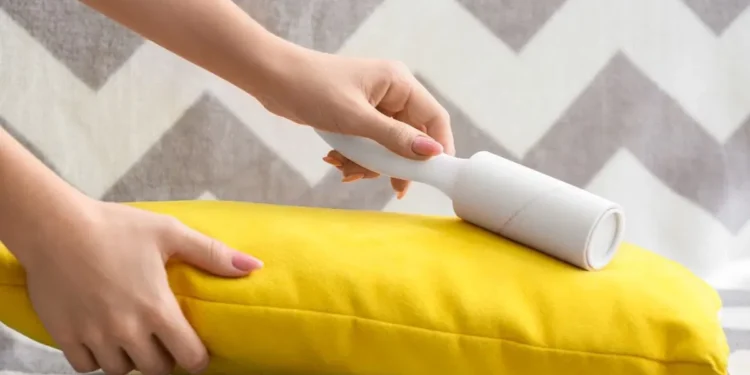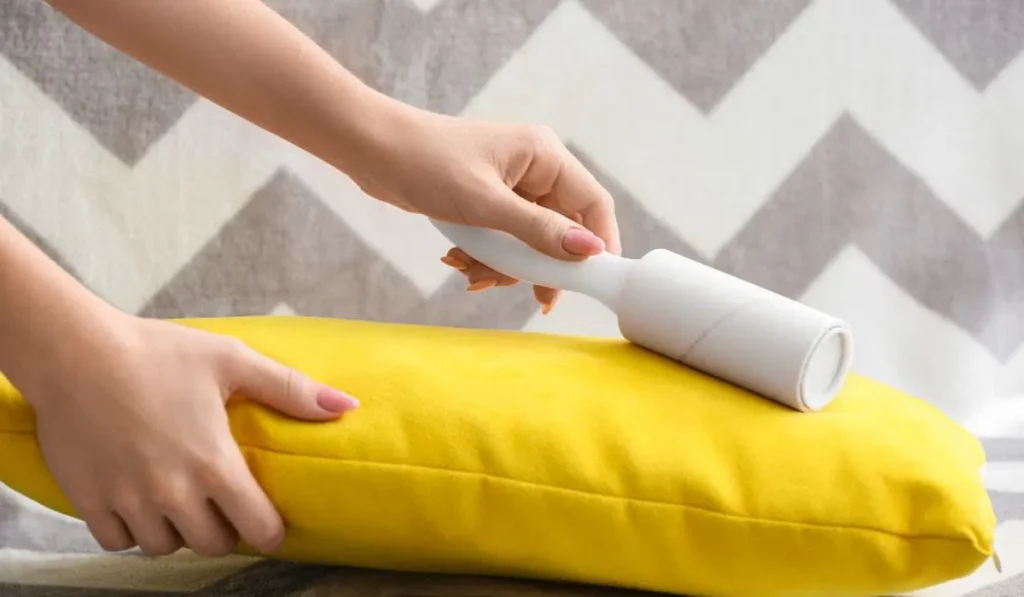Pillows can easily accumulate bacteria, fungi, and mites without us hardly noticing, which is why it’s important to wash them regularly.
After all, we use pillows every day for quite a few hours, and they can easily collect traces of sweat, dust, hair, or stains.
Washing pillows is not that complicated, as you can even do it in the washing machine. All you need to do is to check the label on each pillow.
How Often Should We Wash Our Pillows
The truth is that it will depend on each person (some sweat more than others, some sleep alone and others with company, etc.), but it’s generally recommended to wash your pillows every 3 to 6 months to keep them fresh and clean.
However, if you struggle with allergies, asthma or another type of chronic condition, it’s recommended to wash them more frequently and go for a 3 to 4-month interval instead.
Besides regular washing, consider also protecting your pillows with a pillowcase and a pillow protector to keep them clean and prevent spills, stains, and allergens from building up more easily. Change the pillowcase at least once a week.
Other factors that require pillows to be washed more frequently are eating in bed, having pets or if you experience excessive sweating.
What are the best methods to wash pillows
When washing pillows, it’s first and foremost important to follow the instructions on the label. Different types of pillows will require different methods of cleaning.
Some pillows are not suitable for any type of washing, others should not be put in the washing machine, and many have specific instructions regarding the washing process, such as temperature or required products.
For example, down or feather pillows may need to be dry-cleaned, while synthetic pillows can usually be washed in the washing machine.
Moreover, there are several types of pillows (feather, natural or synthetic, latex, memory foam), each associated with different recommendations.
Generally, most pillows can be washed with just warm water and gentle detergent on a delicate cycle.
Here are a few recommendations to follow before you start washing your pillows:
- Wash your pillows in pairs because this will balance their weight.
- It’s best to add half the amount of detergent you usually use and run an extra rinse cycle.
- Ensure that the seams are in good condition, and repair them if not, as otherwise, the filling could be lost during washing. Here you can find out how to hand-sew fabrics.
- Add some tennis balls wrapped in socks to the washing machine: they help fluff up the feathers and maintain the filling’s fluffiness.
A General Guideline for Washing the Different Types of Pillows
Synthetic pillows
Most synthetic pillows can be machine-washed and dried. Run them on a gentle cycle with warm water and mild detergent, and add a few extra rinses to remove all the soap. Tumble dry them on low heat with dryer balls or clean tennis balls to fluff them better.
Down and feather pillows
These pillows require being washed less frequently than synthetic pillows. However, it still needs to be done periodically. Most of them can be hand-washed or dry-cleaned, but to be on the safe side, check the label for specific instructions.
If you’re hand washing them, use a mild detergent and cold water and rinse them thoroughly. Tumble dry them on low heat with dryer balls or clean tennis balls.
Latex and memory foam pillows
Unless the manufacturer indicates otherwise, memory foam pillows shouldn’t be washed in a washing machine or soaked in water because the friction can break the foam. Instead, spot-clean any stains with a mild detergent and water.
To freshen up the pillow, dredge baking soda on its surface and let it sit for a few hours before vacuuming it. It is advisable to have double pillowcases with zippers on the outside and to regularly wash the pillowcases in the washing machine.
Polyester pillows
Polyester pillows should be washed with less detergent than other types of pillows. One tablespoon of mild detergent will be enough. Run them on a gentle cycle with warm water.
Buckwheat hull pillows
These types of pillows require having their contents emptied out and set in the sun for a while to eliminate any foul odours. Wash the casing with mild detergent and cold water.
What Else to Consider When Washing Pillows
Bear in mind that soap can be difficult to rinse out of some types of pillow fillings, so it’s not recommended to use it.
Besides that, make sure to fluff your pillows daily to remove any settled dust and maintain their shape, and hang them outdoors on a sunny day monthly to remove any bad odours.
When washing your pillows, remember to let them dry completely before using them again, or the moisture left on the pillow can lead to mould and mildew development, which can be a significant health hazard.
Remember that because of the large number of materials that are inside pillows, typical methods of disinfecting will likely be ineffective in cleaning them properly.
How to Wash Yellowed Pillows
No matter how careful you are and despite the protection provided by pillowcases, it is common for pillows to turn yellow due to substances like sweat, saliva, or grease.
You can remove yellow stains from pillows through a simple process using products that are usually found in most households.
Experts recommend using a container with water and a little mild detergent, preferably one designed for delicate garments. Dissolve the product nicely and use a sponge for washing, wringing out the water well to eliminate these stains from yellowed pillows.
Additionally, you can add a bit of bleach for both hand washing and machine washing, and some experts also recommend using sodium percarbonate.
When Should You Throw Away a Pillow and Buy a New One
To determine if pillows are in desperate need of replacement, you need to look at the material they are made of. If latex pillows emit an unpleasant or bothersome odour, it’s better to replace them with new ones.
If the pillow is filled with feathers, check that it still fluffs up, and if it’s foam, make sure it doesn’t have deformations and returns to its original shape when folded in half; if it doesn’t, it’s better to replace it.
Also, a pillow should be changed if there is any sign of a musty odour.
Final Thoughts
Failing to wash your pillows regularly and properly can cause an accumulation of bad odours and create excellent conditions for bacteria to breed in. Bacteria, germs and fungi don’t live only on the cover but can penetrate deep into the fabric of your pillow, the seams and the filling.
In conclusion, maintaining the cleanliness and freshness of your pillows is essential for a healthy and comfortable sleep environment, which also includes your home.
And if you ever want to hand it over to someone else, consider using professional domestic cleaners and take this chore off your mind.






